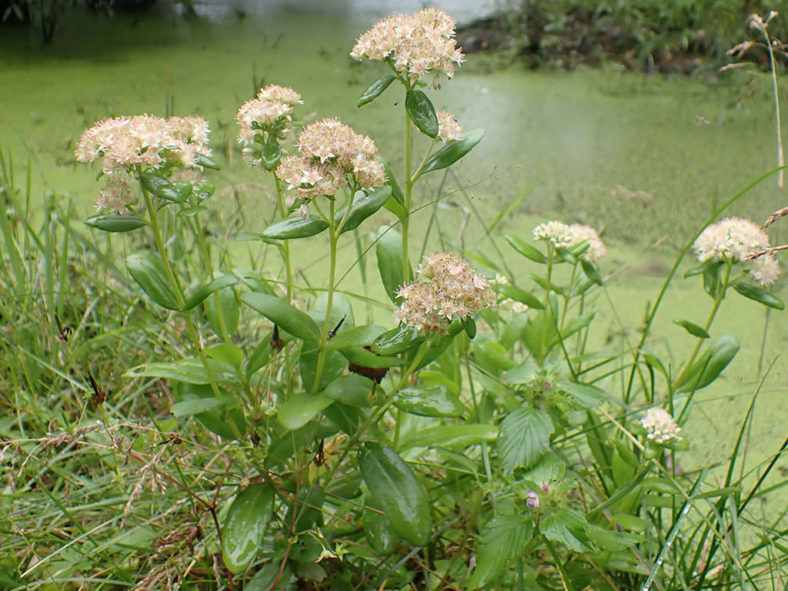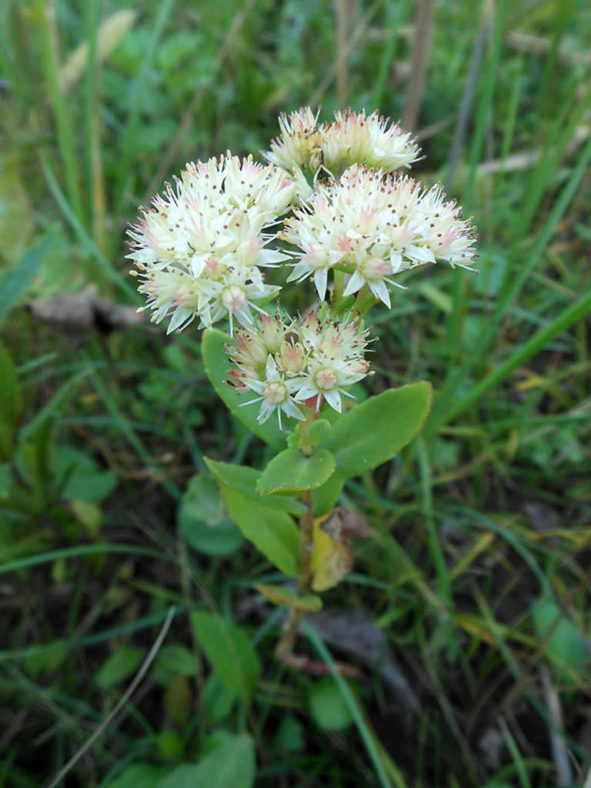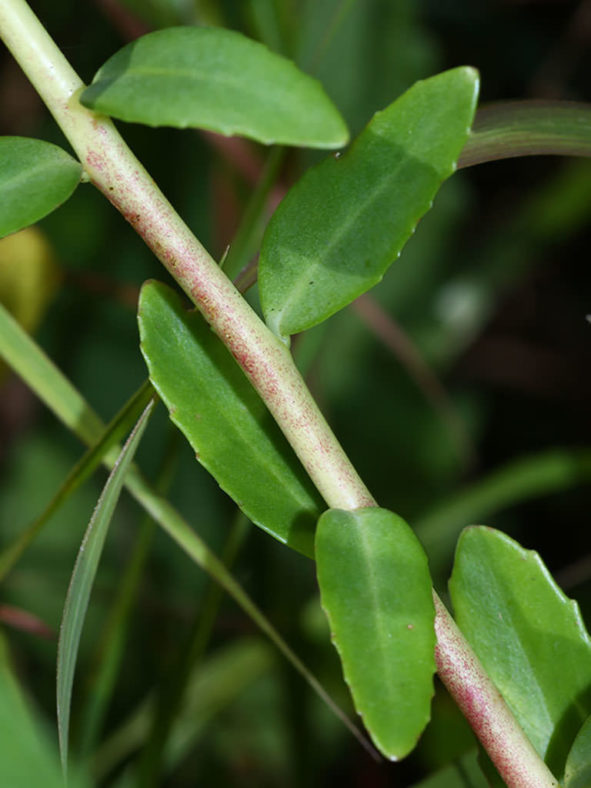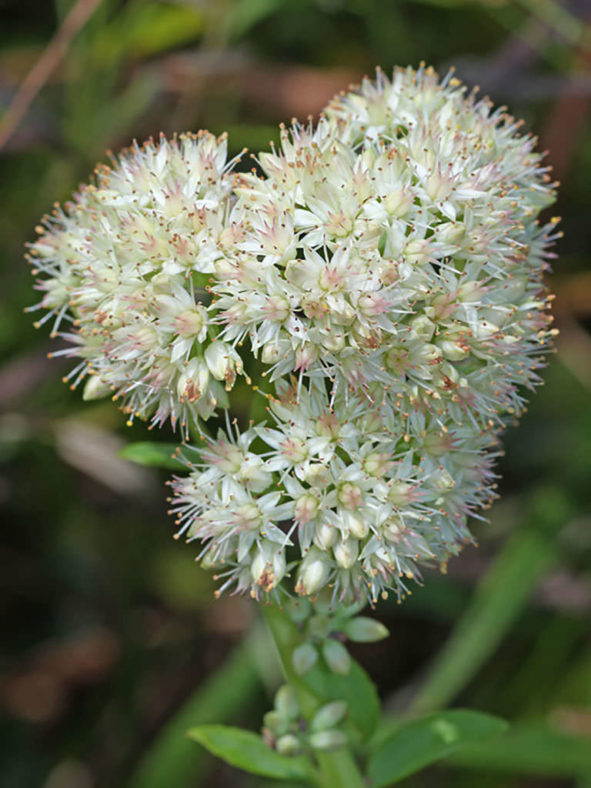Scientific Name
Hylotelephium pallescens (Freyn) H.Ohba
Synonym(s)
Sedum pallescens, Sedum telephium var. pallescens
Scientific Classification
Family: Crassulaceae
Subfamily: Sempervivoideae
Tribe: Telephieae
Genus: Hylotelephium
Etymology
The specific epithet "pallescens (pa-LESS-ens)" means "fading; growing or becoming pale" and probably refers to the pale-colored underside of the leaves.
Origin
Hylotelephium pallescens is native to Russia (Eastern Siberia, Dauriya), north-eastern and northern China, and Japan (Hokkaido). It grows in forests, grasslands, and stony river beaches.
Description
Hylotelephium pallescens, formerly known as Sedum pallescens, is a succulent plant with a short, woody rootstock and erect or ascending stems with alternate, sometimes opposite, dull green leaves. The stems can grow up to 3 feet (90 cm) tall and up to 0.4 inches (1 cm) in diameter. The leaves are oblong–ovate to elliptic-lanceolate with a rounded tip and can measure up to 4 inches (10 cm) long and 1.6 inches (4 cm) wide. They are pale green beneath. The margins of the leaves are nearly entire to crenate with remote and shallow teeth.
The flowers are star-shaped, vary in color from red-purple and pink to white, and appear in dense, many-flowered, flat-topped terminal or axillary clusters in summer. The clusters can reach up to 8 inches (20 cm) in diameter.
In winter, the foliage dies back to the ground, and new growth appears in spring.
Hylotelephium pallescens is often confused with Hylotelephium telephium.

How to Grow and Care for Hylotelephium pallescens
Light: This succulent prefers full sun. It tolerates light to partial shade in hot summer climates but will produce weak, floppy growth when grown in too much shade. Plant your H. pallescens in an area of your garden that gets 6 hours of sunlight daily.
Soil: H. pallescens does not need rich soil, but it does need excellent drainage. Choose a commercial potting mix for succulents, or make one yourself.
Temperature: This plant is cold-hardy and tolerant of heat and drought, making it a popular outdoor succulent. H. pallescens can withstand temperatures as low as -30 °F (-34.4 °C). USDA Plant Hardiness Zones 4a to 9b, -30 to 30 °F (-34.4 to -1.1 °C).
Watering: The best way to water H. pallescens is to use the "soak and dry" method. Get the soil completely wet, and then wait until it is dry before watering again.
Fertilizing: Feed annually with a balanced fertilizer. Apply the fertilizer to the soil according to the package directions in spring as new growth appears.
Repotting: Plants in containers require a little more care than gardens. Repot your H. pallescens when it outgrows its current pot by moving it to a larger pot to hold the plant better. Spring is the best time to repot this plant. Make sure the soil is dry before you begin the repotting process.
Propagation: This succulent can be grown from seeds, division, or stem cuttings. Sow the seeds in spring. Dividing your H. pallescens is easy and can be carried out at almost any time in the growing season, though it is probably best done in spring or early summer. Propagate by stem cuttings in summer.
Learn more at How to Grow and Care for Hylotelephium.
Toxicity of Hylotelephium pallescens
H. pallescens can be mildly toxic to humans and animals.
Links
- Back to genus Hylotelephium
- Succupedia: Browse succulents by Scientific Name, Common Name, Genus, Family, USDA Hardiness Zone, Origin, or cacti by Genus
Photo Gallery
Click on a photo to see a larger version.


